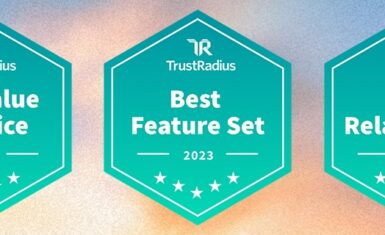I recently commented in a piece that ran in Fast Company, called 16 ways leaders can set achievable expectations for their team to grow. The goal: to inspire individuals, motivate teamwork, and achieve better outcomes.
For the article, my input centered on company culture. It’s something I care deeply about, and something that I’ve put a lot of thought and effort into throughout my evolution as a leader. I wanted to share those thoughts here and expand on them. As I said to Fast Company,
Yes, managers should clearly communicate their expectations for every role and project. But to drive great results across the board, your expectations must truly be part of your company’s culture and DNA. Company culture is how people make decisions when you’re not in the room. With a solid culture, great decision making becomes instinctual because it’s based on what you value and reward every day.
That line—culture is how people make decisions when you’re not in the room—is a frequent saying of mine. If there’s a major disconnect in the vibe and decision-making when a leader is in the room versus when they’re not in the room, that leader has a problem. That company has a problem. Aligning these two things starts with authenticity and transparency. It also involves a great deal of trust. A strong, positive, company culture can never stem from micromanagement or fear.
Focus and clarity
The fostering of company culture feeds into something I’ve been calling “Management by Haiku.” It’s the idea that your mission, purpose, and values must be able to be articulated in a clear, succinct fashion. A haiku is only seventeen syllables, but those seventeen syllables have to count. When you pare your mission, purpose, and values down to the core—removing everything that’s superfluous—it’s much easier to generate alignment. Everyone knows where they’re going. Everyone knows what to expect from you. There’s not a 600-page handbook to digest. It’s simple, straightforward, and undeniable.
Move faster, together
It doesn’t have to literally be seventeen syllables, but sharp focus is critical. When you manage by haiku, everyone in the company—whether you’re in the room or not—can hold every decision up to that clear purpose.
Does it fit? If so, proceed.
If not, do away with it.
This clarity and alignment fosters faster decision-making and innovation. It codifies expectations into your company DNA. It’s like having bumpers on a bowling lane. If you know exactly where the guardrails are, you can feel safe to aim for a strike.
Psychological safety
I use that word “safe” intentionally. Another part of creating a strong company culture is promoting a sense of psychological safety. Alignment isn’t the same thing as homogeneity. Strong cultures are built on the diverse ideas, perspectives, and backgrounds of everyone in the room. People need to feel safe to bring their whole selves to work, to take risks, to fail, to challenge upward, and to keep trying.
How do leaders make this happen? Reward risks. Reward failure. Reward innovation. Walk the walk by celebrating risks and embracing failure for yourself.
Invite challenges—yes, even to your “haiku.” If the haiku doesn’t stand up to challenges, that means it can be better.
It bears repeating: to drive great results across the board, infuse expectations into your company culture. Keep it simple. Make it authentic. Keep listening.






